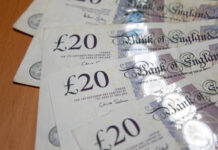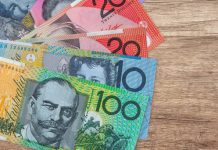Gone in 60 Seconds was a movie released in 2000 starring Nicholas Cage who is charged with stealing 50 high-end cars in three days. It is actually a remake of my preferred 1974 version, where the “hero” is set a much more reasonable target of stealing 48 cars in five days, but I guess that is productivity progress for you. The premise is that from start to finish, one must break into the car and be driving it off (preferably in a cloud of tyre smoke), within 60 seconds, thus avoiding the long arm of the law.
Gone in 60 seconds is what the equity market is looking like today, with the outsized overnight rally on Wall Street, disappearing in a cloud of smoke this morning, with no real reason why. Although the S&P 500, Nasdaq and Dow Jones all finished well over 3.0% higher overnight, US index futures have headed south this morning, and Asian equities completely ignored Wall Streets’ overnight rally for a change.
The term “bear market rally” does come to mind, and given that currency markets didn’t move overnight, and US yields actually rose, it does seem as if Wall Street came back to work with a post-holiday glow, especially as equities globally did quite well over the US long weekend. On top of that US existing home sales continued to ease, maybe the FOMO gnomes of Wall Street felt it meant less Fed hiking? It seems that markets just can’t shake off fears of intensive central bank tightening and recession nerves.
It’s another slow day for data internationally, leaving markets to stew in their recessionary juices and react to headlines. UK Inflation is released at 1400 SGT, with the headline YoY for May expected to rise to 9.10%. A Bank of England member did come out on the hawkish side of the fence, even if it meant a recession. That will be of little solace to the pound, which held steady overnight. Britain is in the throes of a winter of discontent over the cost of living, with a huge rail strike disrupting the country this week. Anyone wondering why stagflation is fait accompli for central banks, need only look at Britain. Do nothing and expect protests on the streets, tighten policy and cause a recession.
With that in mind, all eyes will be on Fed Chairman Jerome Powell tonight, who has the unenviable task of semi-annual testimony on Capitol Hill tonight. (he is also speaking tomorrow) Markets will be standing by to dissect every word the poor man utters for clues on the direction of monetary policy. The FOMO gnomes of Wall Street will be desperately looking for signs he is blinking on tightening so that they can rush back into their buy-the-dip happy place.
On the side-lines, a few things are happening in Asia today. Oil has slumped by 3.50% although I cannot see any notable reason for it. Maybe some large positions are being shopped, or perhaps it is a reaction to expectations that US President Biden will announce a suspension of Federal fuel tax tonight. That’s about 19 cents a gallon, making it drop in the ocean for gasoline prices. Maybe 3.50% of oil futures prices is equivalent to that?
In the equity space, South Korea Kospi is getting an outsized beating today. The Kospi is down just over 2.0% at the moment, rather a surprise after the successful test of a rocket to launch satellites yesterday. Perhaps markets believe it can also be loaded with high explosives and pointed north? More likely it seems, are reports of two monkeypox cases in South Korea. The pandemic has left markets frazzled about viruses. I welcome any input from readers more connected or cleverer than I. (the latter being a low bar)
We should also be paying attention to Europe right now, most especially the energy space. Russian natural gas flows have slumped with each side blaming the other. Countries across Europe are activating emergency energy plans, including reactivating coal-fired power plants. Even the greens are finally admitting that a clean energy transition is incompatible with the short-term goals of a war-time economy. (nb: I’m a tree hugger but also a realist, especially around nuclear power and transitioning the energy transition and wat-time economic needs. Don’t email me accusing me of wanting to cut down the Amazon forest) If Russian gas continues to fall, we can pencil in a European recession if they hold their nerve with Vladimir. The Euro is likely to make its way towards parity shortly thereafter. A recession in Europe will be another headwind for growth globally and give the ECB a few more stagflation headaches.
Following Mr Powell, we also have the Fed’s Barkin, Evans and Harker speaking this evening. Barkin was particularly hawkish on the wires overnight, which made the Wall Street rally even more surprising. We also have a 20-year bond auction and the bid-to-cover ratio will be interesting. If all four are aligned as the four riders of the monetary policy apocalypse, yesterday’s Wall Street equity rally looks more and more like gone in 60 seconds.
Asian equities ignore the overnight Wall Street rally
Wall Street rallied broadly overnight, with the three main indexes having banner days as the call of buy-the-dip proved irresistible after a weekend in the Hamptons. The S&P 500 rallied by 2.45%, the Nasdaq leapt 2.51% higher, and the Dow Jones booked a healthy 2.19% gain. Unfortunately, US index futures in Asia are telling a story of fast-money locking in short-term overnight gains as all three head south. S&P 500 and Dow futures have sunk by 0.85%, while Nasdaq futures have fallen by 0.70%.
Rather surprisingly, Asian markets, even the Wall Street following slaves in Japan and Australia, have completely ignored the overnight rally, with most of Asia flat to lower. The abrupt about-turn by US futures today could be behind it when combined with a lack of conviction about the overnight rally’s staying power.
Japan’s Nikkei 225 is 0.20% lower today, while the South Korean Kospi has slumped by 2.0%, perhaps over monkeypox fears. Mainland China’s Shanghai Composite is down 0.30%, with the CSI 300 falling by 0.45%. In Hong Kong, Hang Seng has retreated by 1.30%.
Across regional markets, Singapore has eased 0.40% lower, while Taipei has slumped by 2.0%. It is interesting that the Caligula’s of semi-conductor manufacturing, Taiwan, and South Korea, are the day’s worst performers. Perhaps it is a proxy play for a US and Europe recession? Kuala Lumpur has fallen 0.70%, Jakarta by 0.30%, Bangkok by 0.60%, and Manila by 0.40%. In Australia, the ASX 200 is 0.10% lower, with the All Ordinaries down by 0.20%.
Asia-Pacific markets, ex Taipei and Seoul, appear content to adopt a wait-and-see approach this week, letting the dust settle on the Powell testimony. That caution is likely to finally nip the European equity rally in the bud as well, which has been ignoring the natural gas crisis completely and at its peril. European equities are likely to open lower this after in line with Asia.
Currency markets continue their sideways trading
With the notable exception of the Japanese Yen once again, currency markets refused to buy into the snake oil promises of the equity markets. The US Dollar did push lower intraday across the board but recovered as US yields held firm. The dollar index finished almost unchanged at 104.42, edging higher to 104.60 in Asia, as equities sink. The dollar index has support at 1.0350 with resistance now distant at 1.0570.
EUR/USD rose just 0.22% to 1.0535 overnight, an intraday rally fading ahead of 1.0600 once again. In Asia, risk sentiment has soured, sending the single currency 0.22% lower to 1.0510, unwinding the overnight gains. It has initial resistance at 1.0600, with challenging resistance at 1.0650. Support is at 1.0450 and 1.0400. Sterling rose just 0.25% to 1.2280 overnight, unwinding that move and falling 0.30% to 1.2240 in Asia. GBP/USD has initial resistance at 1.2360 and 1.2400, with support at 1.2200 and then 1.1950.
USD/JPY was the big mover in the DM space overnight, rocketing 1.15% higher to 136.65, a 24-year high. In Asia, it has fallen 0.35% to 136.20 after some belligerent comments about currency moves by the Bank of Japan. The Bank of Japan minutes though, reveal the committee is comfortable with monetary policy settings, and although not happy with the Yen vol, is not hitting the panic button at all. US yields firmed overnight, boosting USD/JPY, and although I don’t rule out some nasty downside corrections, they are likely to be short-lived in the current environment. Only a sharp, and I mean sharp, fall by US yields is likely to stop the USD/JPY rally. USD/JPY has support at 135.00 and 134.50, with resistance at 136.65 and 138.00.
AUD/USD and NZD/USD booked modest gains overnight but have slumped today as risk sentiment has soured. AUD/USD has fallen 0.60% to 0.6930, and NZD/USD has slumped 0.95% to 0.6275. While supports at 0.6850 and 0.6200 hold respectively, further gains to 0.7150 and 0.6450 cannot be ruled out, but both down under dollars remain as tied to swings in investor sentiment as ever.
Asian currencies saw no sentiment-driven gains overnight, and in fact, most post small losses versus the US Dollar. Another warning sign that the overnight Wall Street rally was a solitary rear-guard action. With the US Dollar strengthening today, Asian currencies are in retreat. USD/KRW, USD/CNH, USD/CNY, USD/INR and USD/PHP have all gained around 0.40% this morning. A hawkish Jerome Powell this evening, with reinforcement from the other Fed speakers could prelude more Asian FX weakness, and I wouldn’t be surprised to see the Bank of Korea, Bank Indonesia and the BSP Manila all intervening tomorrow.
Oil prices slump in Asia
Oil prices probed the topside intraday overnight but gave back those gains with Brent crude almost unchanged at $114.60 a barrel, and WTI edging 0.55% lower to $109.65 a barrel. In Asia, both contracts have slumped, with WTI notably, falling through longer-term support. Brent crude has fallen 3.40% to $110.75, and WTI has fallen by 3.80% to $105.50 a barrel.
There is a distinct lack of drivers behind this move, and certainly no headlines to justify it. I surmise that President Biden’s expected announcement of a temporary suspension of Federal fuel taxes this evening has prompted the selling, and I do note the US-centric WTI contract is leading the charge lower. From here, a more likely outcome is a widening of the Brent premium over WTI. Brent is the internationally traded benchmark and in the real world, supplies remain as tight as ever.
Today’s falls have bought my six-month support lines back into focus. WTI has fallen through its six-month support line at $106.30 a barrel and is attacking the 100-day moving average (DMA) at $105.40. A daily close below $105.40 would be a very bearish technical development for WTI. Brent crude’s 100-DMA is at $108.40 today, with the six-month support line at $107.30 a barrel. Failure of the latter would also be a powerful bearish technical signal, although Brent crude remains well clear of both levels.
Given the weight of speculative long-positioning in WTI especially, it looks the more vulnerable to the Biden gasoline put. However, I remain of the opinion that the contortions of the futures market are not representative of the real-world situation. As such we shouldn’t get our hopes up for sub-$100 dollar oil just yet.
Gold range continues
Although gold’s interminable range-trading continued overnight, the falls of the past three sessions to hint that any upward momentum for the yellow metal is doing an Elvis and is leaving the building. Gold has been grinding lower, even as US yields and the US Dollar trade sideways.
Overnight, gold edged 0.30% lower to $1833.00 an ounce, falling another 0.33% in Asia to $1827.00 an ounce as US Dollar strength returns. A bout of US Dollar strength post-Powell testimony could finally set up a meaningful test of the bottom of the recent range around $1800.00 an ounce.
Gold has resistance at $1860.00 and $1880.00, the latter appearing an insurmountable obstacle for now. Support is at $1805.00 and then $1780.00 an ounce. Failure of the latter sets in motion a much deeper correction, potentially reaching $1700.00 an ounce. On the topside, I would need to see a couple of daily closes above $1900.00 to get excited about a reinvigorated rally.













